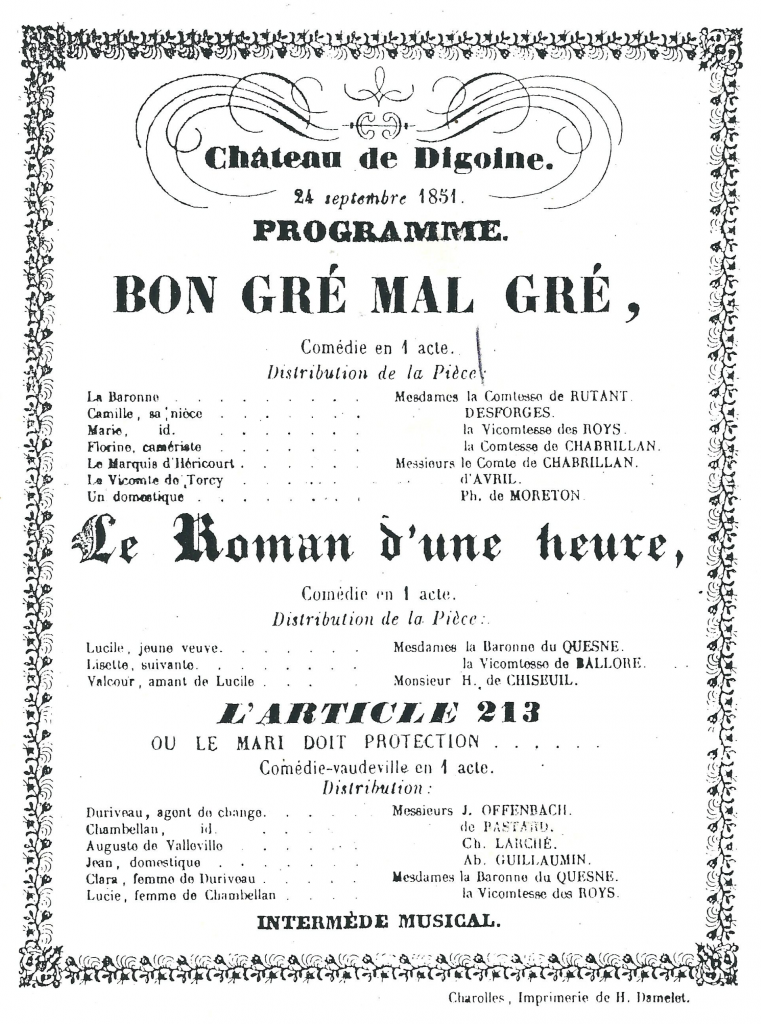The small theatre of Digoine is the real gem of the castle. Built in 1842 by the Count and the Countess of Chabrillan, it received many guests every summer. Some very well known, like the Goncourt brothers, who will later describe the theatre like a “smaller scale version of the Versailles theatre”.
A small theater that has everything of a big one
Replica of Italian theatres of the 18th century, this authentic room was conceived by Pierre-Luc-Charles Cicéri, a court painter and head designer of the Paris Opera. We owe him the magnificent stage curtain painted in a ‘trompe-l’œil’ way with imitations of draperies richly adorned. Behind the curtain, stage decorations which represent a forest, a prison, a kitchen and a living room are still very well preserved and from the same artist.
The room has perfect proportions, with its red, gold and white setting and its very particular room acoustic, and could invite around 200 guests while still possessing todays all the traditional attributes of a theatre : a stage with the complete machinery, the gallery, stage rooms, an orchestra pit and the prompter’s box.
A place of relaxation
As a real ‘théâtre de société’ (‘society theater’), the atmosphere mixed entertainment and intimacy. For instance, to pay tribute to the lady of the house, it was common practice for the guests to put on a little show, an impromptu where they went on stage to caricature in a subtle way the other guests.
The young cellist Jacques Offenbach, invited in this unique location by the Countess of Chabrillan in 1851, composed ‘daydream by the seashore’ and the ‘Triumphal waltz of Digoine’. Unfortunately, the partition of this last one has never been retrieved. Besides, in 1900, the stage-boards of the theatre have been used by the actress Sarah Bernhardt, who came to repeat a play from Edmond Rostand named ‘l’Aiglon’ (eaglet).
Source: www.youtube.com
Program of plays
The small theatre which is ‘in its own juice’ to use the expression, is part of the next elements that will be restored in the estate.





